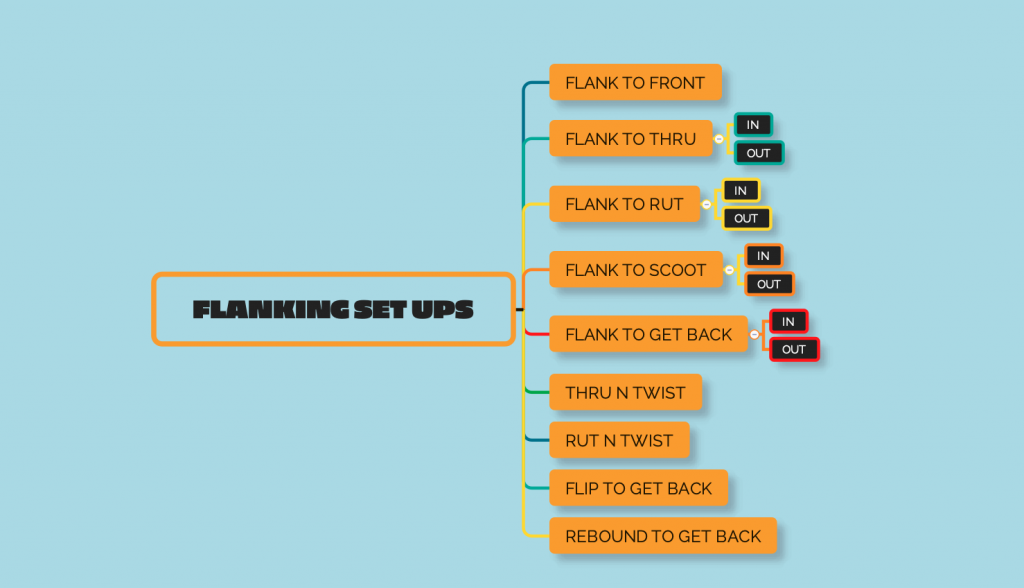
Interior Flatwork | Flanking Set Up Moves | Part 1
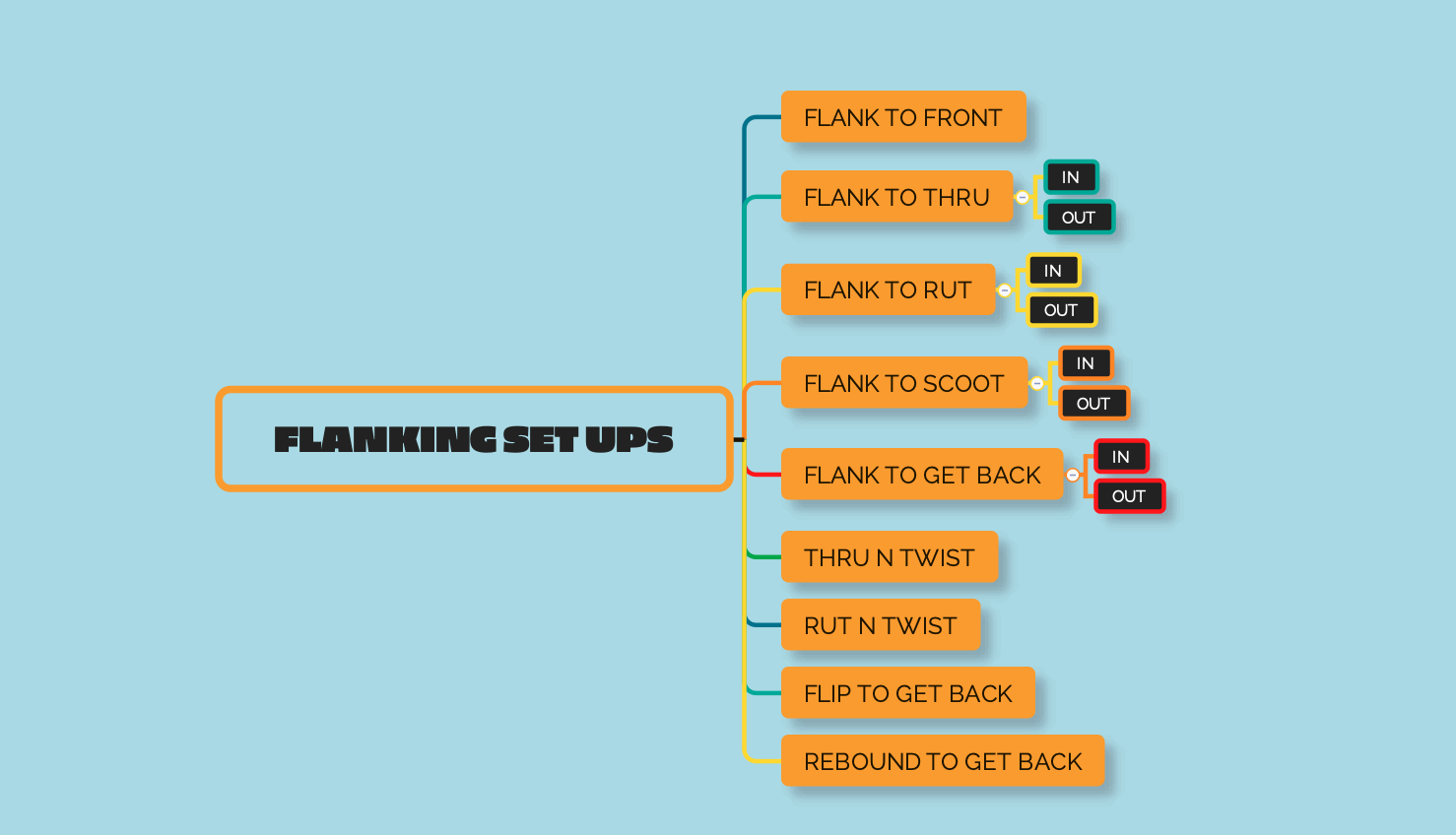
Flanking Retrieve vs Linear Retrieve
This is not really this or that or vs, it’s more a matter of degree. There is always a flank. Your dog is always approaching you with a lead declared. A right lead is counter clock, a left lead is clock. That said, there is a difference between a Working Flank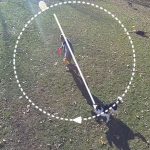 The Working Flank is a moving position. On a Working Flank the dog is out to your side some distance and holds position, moving with you as you move around the field. The... More and a simple linear retrieve.
The Working Flank is a moving position. On a Working Flank the dog is out to your side some distance and holds position, moving with you as you move around the field. The... More and a simple linear retrieve.
In the simple linear retrieve, oppositional pressure is already applied to the dog as the dog approaches – this is the most pressure that can be applied to the dog, and it is applied throughout the retrieve.
Teams who don’t have experience working the flank or who do not employ a Flanking Retrieve often have trouble hooking up in front position on a linear retrieve. The dog either bolts by or slams into the handler and the team has trouble establishing and holding position.
A Flanking Retrieve is pulling the dog towards the front and relies on positional pressure, or slight oppositional pressure to stop the dog at the appropriate time. Teams who have experience with this skill or handlers who are skilled at applying positional pressure have little trouble establishing a stable position on retrieves of any angle.
Both versions of the retrieve rely on positional pressure to stop the dog. Once the dog gets close the handler applies oppositional pressure to halt and position the dog. Once the dog is in position, the oppositional pressure is relaxed and, if needs be, simple positional pressure and reward placement takes over.
This stuff is a fact of dog. It matters not if you care about this stuff or not. This stuff is happening and these are the functions that teams are employing to establish a working position.
Linear Retrieves Don’t Flow, they Crash
Linear retrieves don’t flow well. Like waves hitting the beach, the linear approach crashes. Strategic crashes are interesting and can and should be employed to establish and enhance flow, but if this is the only method of hooking up being employed, a team’s flow will suffer.
Flank to Front
Pulling the dog in from the side, or turning to the side as the dog comes in on a linear approach, to create a clock or counter flank on the way in allows the handler to control the dog’s movement without the team crashing and smashing together. The handler can smooth out the hook up, soften up the lines, eliminate the crashing connection, and make team movement slosh around at will.
Simply turning to the side pulls the dog to the front of the handler. Turning to your right puts the dog on a clockwise approach, turning left puts the dog on counter. To stop the dog in Front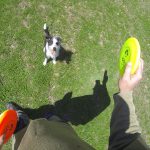 Front is a stable position directly in front of the handler. Front is an traditional obedience skill. Usually your dog sits in this position, but standing is often acceptable as well, especially in... More position, the handler simply turns into the dog, applying some positional pressure, and the dog will stop in a rough approximation of Front PositionIn the Play+ philosophy, "Position" is the final stage within the "Next" phase of a Cycle of Play. It acts as a pivotal link between the "Next" phase and a new "Now" phase. More.
Front is a stable position directly in front of the handler. Front is an traditional obedience skill. Usually your dog sits in this position, but standing is often acceptable as well, especially in... More position, the handler simply turns into the dog, applying some positional pressure, and the dog will stop in a rough approximation of Front PositionIn the Play+ philosophy, "Position" is the final stage within the "Next" phase of a Cycle of Play. It acts as a pivotal link between the "Next" phase and a new "Now" phase. More.
Practice and experience with this skill will make setting up in Front Position as reliable as clockwork.
Flank to Thru
The Thru Set Up Move is the goto set up move Set Up Moves are tricks that are used to establish timing and position in disc dog freestyle. Traditional tricks include: Around, Through, Backwards Through, and Scoot, but any or all of your tricks,... More for most teams and is the only way to flow through a linear retrieve. The dog comes rushing back on the linear retrieve and the only way to flow is to send the dog by the handler in a Passing maneuver, over the handler in a Big Over
Set Up Moves are tricks that are used to establish timing and position in disc dog freestyle. Traditional tricks include: Around, Through, Backwards Through, and Scoot, but any or all of your tricks,... More for most teams and is the only way to flow through a linear retrieve. The dog comes rushing back on the linear retrieve and the only way to flow is to send the dog by the handler in a Passing maneuver, over the handler in a Big Over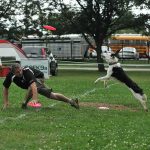 Most players have several overs and the Big Over is the largest, and most impressive of them. Frequently, the Big Over goes over the center of the handler’s body, but that is not... More, or to bring the dog Thru, under the handler. Each of these maneuvers sends the dog away from the handler and have little directional impact or ability for Team MovementTeam Movement is how dog and handler move, as a team, out there on the field. It is a judging category in some organizations and certainly is a focus of many judges, players,... More.
Most players have several overs and the Big Over is the largest, and most impressive of them. Frequently, the Big Over goes over the center of the handler’s body, but that is not... More, or to bring the dog Thru, under the handler. Each of these maneuvers sends the dog away from the handler and have little directional impact or ability for Team MovementTeam Movement is how dog and handler move, as a team, out there on the field. It is a judging category in some organizations and certainly is a focus of many judges, players,... More.
Working a Thru from the Working Flank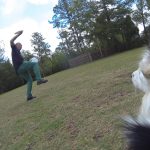 Out to the side of the handler is the Flank. If the dog is out to the handler's right or left the dog is on Flank. If the dog is moving with the... More is a slightly different operation with a couple of options. The flank can be continued with the directional choice of the Thru, which we call “In” or flank direction can be opposed or short circuited, which we call “Out”. The In spirals in towards the handler and the Out S-Turns away from the handler.
Out to the side of the handler is the Flank. If the dog is out to the handler's right or left the dog is on Flank. If the dog is moving with the... More is a slightly different operation with a couple of options. The flank can be continued with the directional choice of the Thru, which we call “In” or flank direction can be opposed or short circuited, which we call “Out”. The In spirals in towards the handler and the Out S-Turns away from the handler.
Thru In
In, for our purposes, means to continue the flank direction. So a dog approaching from the handler’s left, moving clockwise, will go through the legs and hug the left leg of the handler, continuing around in clockwise fashion. This creates a spiral type shape or a strong arc, reversing field. If the handler wants to stop the dog, the handler simply turns into the dog, in the opposite direction, and the dog runs into Front Position as the handler’s positional pressure opposes the dog’s motion. Boom!
This can be done in clockwise or counter clockwise fashion depending on the needs of the handler. The only requirement for the Thru – In movement is that the dog continues to turn in the direction of the flank as the through is executed.
Thru Out
Out means to break out of the flank direction and start moving in the opposite direction. If the dog is coming from the left, in clockwise fashion, the handler will bring the dog through and the dog will hug the right leg of the handler while going through. The dog will do a little S-Turn under the handler and continue out to the handler’s right, and will be on a counter clock flank. Swish!
If the handler wishes to stop the dog, positional pressure is applied against the dog’s movement. In the situation above, the handler will turn to the right, and front position can be established. Boom!
Pro Tip: When dogs go Thru and no target is presented, they turn in the direction of the Bent Leg.
This is the direction that the dog perceives the handler to be moving in… give it a shot.
Flank to Backwards Thru (Rut)
The Backwards Thru is a little funkier than the Thru. On a Backwards Thru (aka: Rut), the dog moves between the handler’s legs from back to front. This can happen in both the clockwise and counter clockwise directions, although few handlers (myself included until a month ago) have both directions strong enough to perform them on the fly with discs in play.
You might need to firm up the skill to be able to use it to the fullest.
Backwards Thru – In
In continues the flank the dog enters the Backwards Thru, so if the dog enters the move clockwise, In continues the flank and spirals in to the handler in clockwise fashion.
Backwards Thru – Out
Out breaks the flank that the dog enters the Backwards Thru on. So if the dog enters on Counter, Out breaks the flank and exits on Clock.
Pro Tip: As the dog approaches, turn against the dog’s movement turning your back into the dog’s line.
Another way of thinking of it is to turning your heels to the dog and straddling the dog’s line.



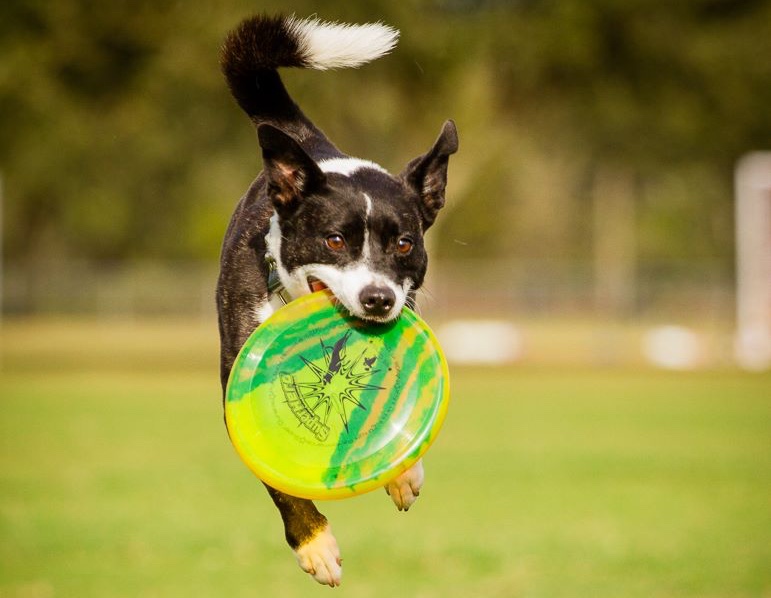
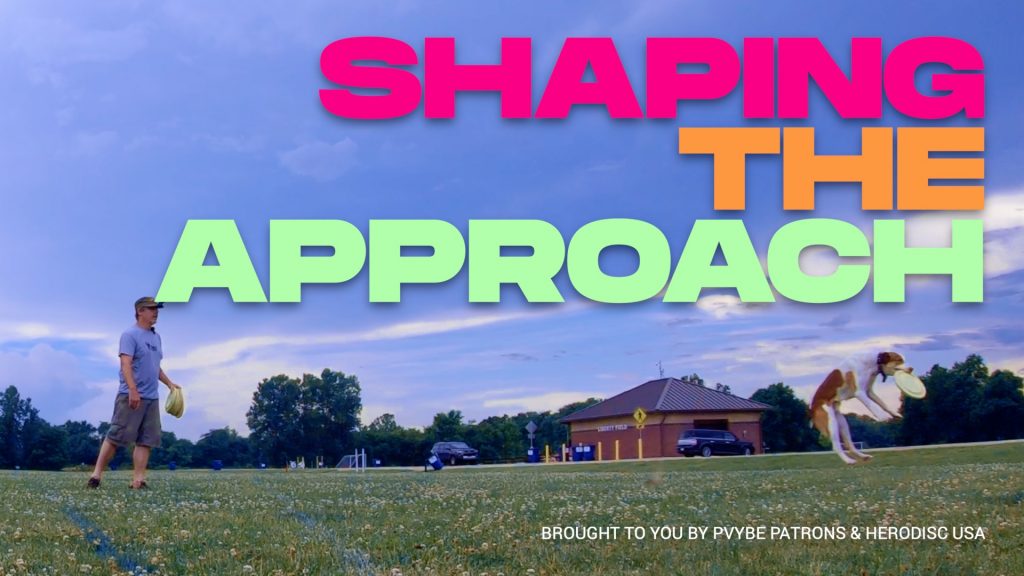
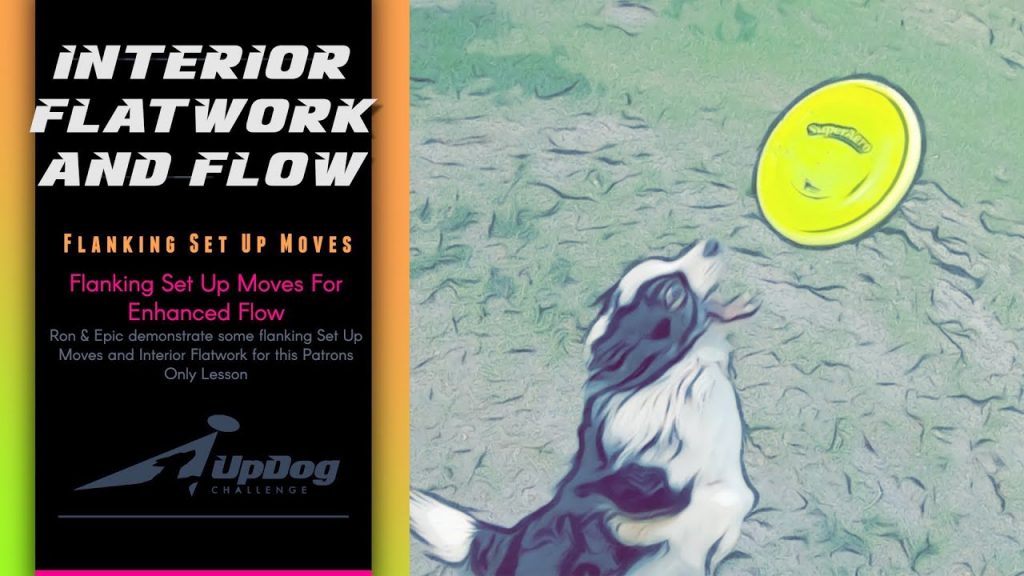
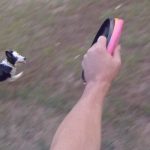
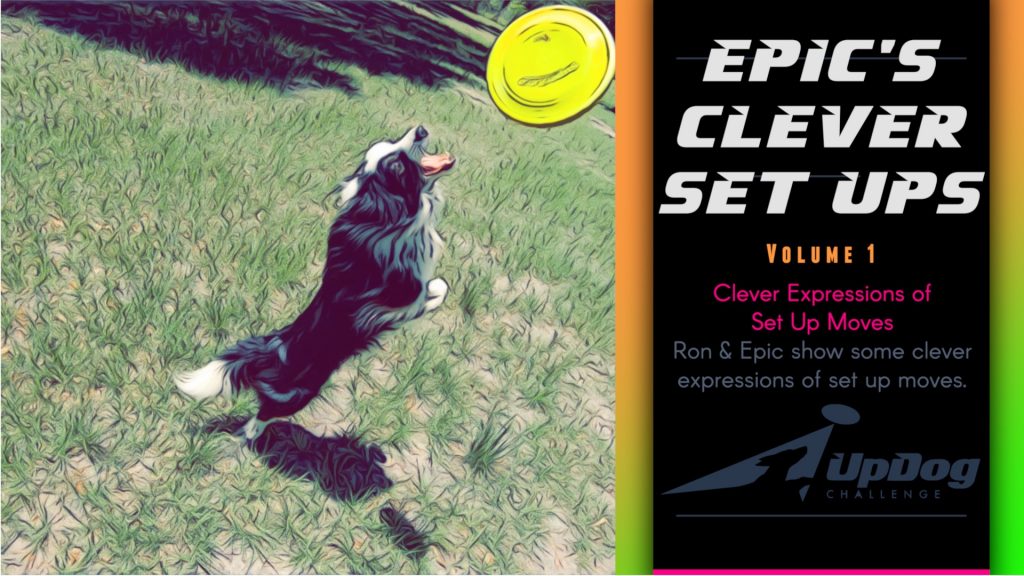
Responses